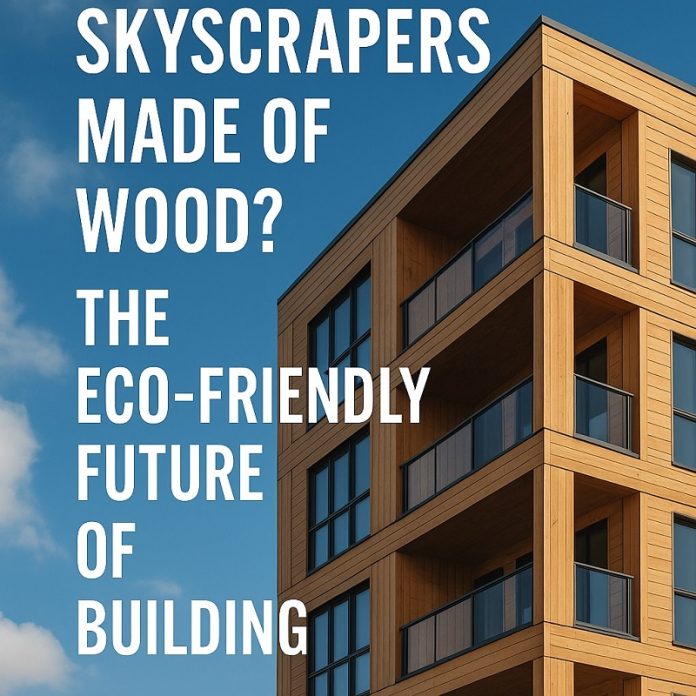
What if the future of skyscrapers and large buildings was made not of steel or concrete, but of wood?
A new study shows that cross-laminated timber (CLT)—a strong, fire-resistant wood product—could offer major environmental benefits if widely adopted in construction.
CLT is made by layering and gluing sheets of wood together in a crisscross pattern.
This creates large wooden panels that are light, strong, and durable enough to build entire walls and floors.
These panels can be as long as 60 feet and are surprisingly fire-resistant. When CLT is exposed to flames, the outer layer turns into a protective char that helps keep the rest of the wood from burning.
To understand the true impact of using more CLT, researchers combined two tools: a life cycle assessment (LCA) and the Global Timber Model (GTM).
The LCA tracks the environmental impact of a product from beginning to end—including raw materials, transportation, manufacturing, and disposal.
The GTM predicts how land use and economic policies affect the global timber market. By bringing these tools together, the team could study not just CLT’s environmental benefits, but also its economic and land-use effects over time.
The research, led by Assistant Professor Kai Lan at North Carolina State University, found that switching to CLT in construction could increase forest coverage around the world.
While some natural forests might be cleared to make room for managed timber plantations, the total area of forested land would still grow. In fact, the study predicts that by the year 2100, we could see nearly 30 million more hectares of forest globally.
However, the changes wouldn’t be the same everywhere. Countries like the United States and those in western Europe would likely gain more forested land, while some tropical areas near the equator could lose natural forest.
There would also be economic shifts. As CLT demand rises, the need for raw timber grows. But even with more trees being planted and managed, the supply increase wouldn’t fully match demand. This would lead to higher prices—about a 26% rise for sawtimber used in construction and a similar increase for pulpwood used in paper products by 2100.
The environmental impact goes beyond forest growth. CLT stores carbon in both the wood product itself and the forests used to produce it. Depending on how fast the world adopts CLT, the study estimates that CLT could help store between 20 to 25 billion metric tons of carbon dioxide by 2100.
On top of that, replacing traditional building materials like steel and concrete with CLT would reduce the carbon emissions needed to produce those materials.
By choosing wood instead of steel or concrete, future builders could help fight climate change, reduce pollution, and encourage reforestation—one wooden panel at a time.
Source: North Carolina State University.



